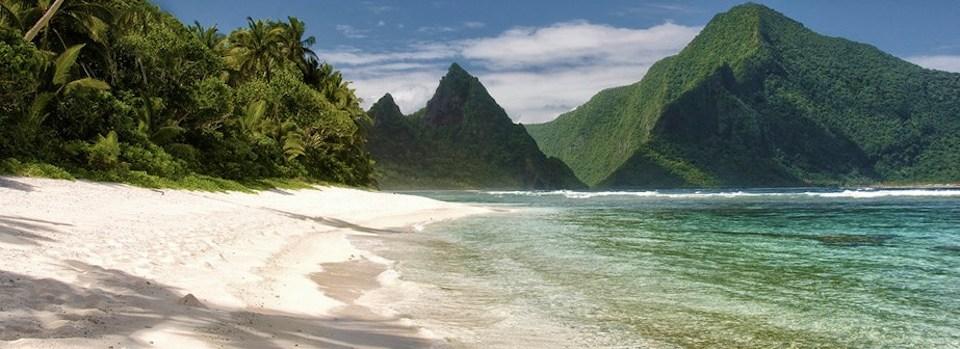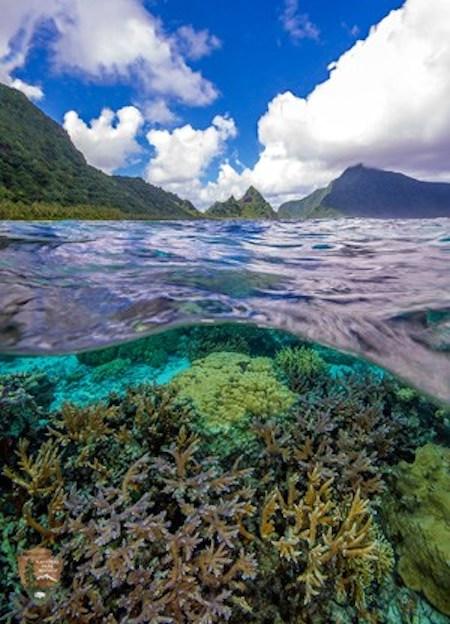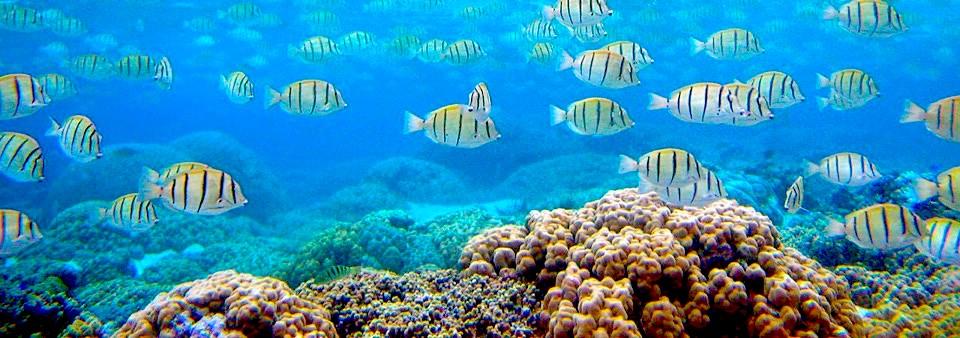
National Park of American Samoa/NPS
Editor's note: The following article was written by Larry Perez of the National Park Service.
Ohio is generally not known for its beaches. So how did Victoria Barker—a native of Cincinnati—find childhood inspiration to work on coral reefs? "There's one thing you need to know about people who live in Cincinnati," she recently told me, "they all seem to vacation at Hilton Head." Annual family visits to the South Carolina coast eventually enticed her to study marine communities from the Gulf of Mexico, to the Caribbean, to Australia's Great Barrier reef.
In so doing, Barker has personally experienced a troubling global trend. Corals reefs around the world are feeling the heat from rising ocean temperatures. Exposure to extreme warmth—particularly over prolonged periods—compels corals to eject their photosynthetic alga, leaving polyps bereft of color and in danger of starvation. Massive coral bleaching events have become increasingly commonplace and widespread, often garnering media attention as they ravage popular visitor areas. But Barker’s latest assignment provides her some measure of hope for the future.
New research
Two years ago, the National Park of American Samoa invited Barker to work on marine issues under an appointment through American Conservation Experience. Since 2015, the park’s coral reefs have similarly suffered annual bleaching events in response to warming waters. But in a recent research synthesis published in Climate Change Reports, Barker identifies a handful of coral communities in the park that have thus far managed to buck the trend. "Corals off the coast of Ofu Island," she writes, "regularly experience extreme temperatures without widespread bleaching and mortality." For over 20 years, the National Park Service has partnered with several organizations to better understand the significance of these reefs, and Barker's article summarizes research into their unusual thermal tolerance.
Earlier research in Australia and the Persian Gulf documented similar tolerance to extreme temperature environments among particularly hardy species of coral. What makes the pools of Ofu remarkable, though, is the general persistence of a diverse coral community, including species typically more sensitive to temperature. "We have about 85 coral species," says Barker, "and the community as a whole seems well-adapted to where they live."

Coral reefs at Ofu Island in National Park of American Samoa/NPS
Ofu pools
Environmental factors experienced on the remote island likely contribute to this increased tolerance. Twice daily, rising tides overtop the seaward crest of the reefs, flushing Ofu's "back reef" pools. Some evidence suggests this intermittent exchange of water may encourage a resistance to bleaching, as high rates of water flow appear correlated with other benefits to coral growth and metabolism.
Regular exposure to elevated temperatures can also condition corals to better tolerate temperature extremes. In the pools of Ofu, daytime transitions from high tide to low can yield surprising spikes in water temperature, sometimes fluctuating as much as 6 °C during a single tidal cycle. Some evidence suggests regular exposure to warmer temperatures may help protect corals from acute stress.
Fundamental genetics may further contribute to the resilience of Ofu's coral communities. The presence or absence of particular genetic variants of both the polyps and their symbiotic algae appear correlated to greater thermal tolerance. Even compositional differences in the bacterial microbiomes in which the corals thrive may have a hand in tempering stress to warmer temperatures.
The importance of Ofu
On the reefs of Ofu, research is unearthing secrets about how some coral communities might weather future ocean conditions. But reefs—and reef managers—will need to contend with more than just heat. Warming ocean temperatures will layer upon existing impacts from ocean acidification, overfishing, eutrophication, tropical storms, and other environmental threats. "Well managed coral ecosystems can recover from bleaching events more quickly and more successfully than their degraded counterparts," Barker writes, "which can reduce the time required for full reef recovery by years or even decades."
Assuming Ofu pools continue to function as strongholds of coral diversity, they may serve an important role in understanding and protecting imperiled reefs elsewhere. "A lot of very unique work has been done here that has not been replicated in other areas," says Barker. "But the big takeaway is that while there is a lot we know, there is also a lot we don't yet fully understand." Continued efforts to monitor and study the reefs of Ofu are likely to reveal important new insights in years ahead.
A local connection
But Barker is quick to remind people that the reefs of Ofu are far more than a source of scientific curiosity. "On a local level," she says, "they are incredibly important to the American Samoan people. The ocean is central to their culture and a focal point of traditional lifeways. And the reefs—in particular—are literally their source of sustenance."
Through local outreach and education efforts, the park is working to forge strong connections between today's students and the world-class reefs just offshore of the islands. It's an effort Barker strongly supports, knowing full well how a simple childhood connection can inspire a lifetime of action.

Reef fishes at Ofu Island, National Park of American Samoa/NPS






Add comment